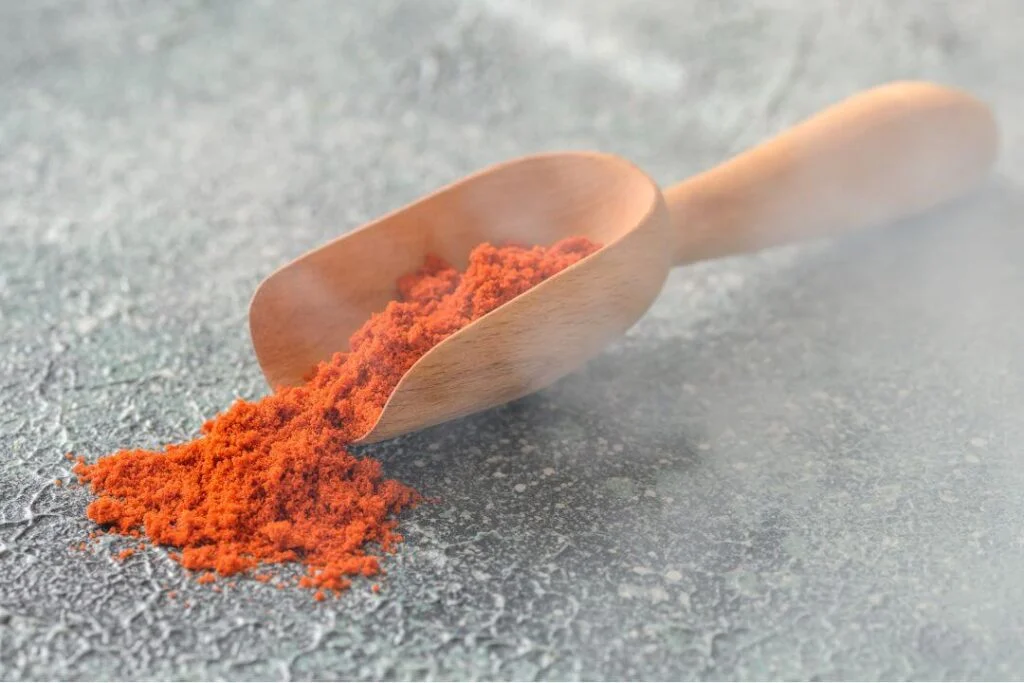
Paprika is a treasure in the cuisine of various cultures around the world, but in Spain, its status is unsurpassed. Its various nuances of flavor, its intoxicating aroma and its health benefits make it a fundamental ingredient in countless recipes, paella being one of the most notable.
Whether for its delicate sweetness or its distinctive perfume, paprika stands out as an indispensable component in the universe of paellas.
In this publication, we will explore the uniqueness of paprika and discover how to use it to enhance the flavor and aroma of our paellas and rice dishes.
History and origin of paprika
The history of paprika dates back to the New World, also known as America, where it was discovered and quickly adopted by the Spanish and Portuguese, who brought it to Europe.
In Spain, specifically in areas such as La Vera, smoking techniques were perfected that gave paprika that unmistakable flavor, making it a culinary treasure appreciated throughout Spanish gastronomy.
Paprika varieties and their characteristics
In the realm of sweet paprika, commonly used in paella, there are several notable varieties:
Sweet paprika, with its mild flavor, is used in dishes needing a touch of color without overpowering the taste. From rice dishes to paellas, it’s a common ingredient in cooking.
A standout variety is the paprika from La Vera, known for its smoky flavor achieved through a smoke-drying process.
For experimenting in paella, it’s recommended to mix half sweet paprika and half La Vera paprika to balance the flavors.
There’s also essence paprika, obtained from ripe pepper fruits.
Lastly, hojilla paprika, with a slight smoky and mildly spicy flavor, is used in various dishes, particularly in chorizos and sausages.
Properties and benefits of paprika
Paprika isn’t just a flavor enhancer, it also offers an array of health benefits.
It’s rich in vitamins and minerals, particularly high in vitamins C and E, along with significant amounts of iron and potassium. Among its benefits is its ability to bolster the immune system by protecting against oxidative stress, thereby improving overall health.
Thanks to these properties and its frequent use as a key ingredient in rice dishes, paprika not only enhances the taste of our meals but also boosts their nutritional value.
How to use paprika in paella?
Using sweet paprika in paella is simple. Once you have sautéed all the meat or seafood, add the sweet paprika. For a paella for four people, use about 2.5 grams.
We quickly add water to prevent the paprika from burning and giving the paella a bitter taste.
Using sweet paprika in your paella is a simple but crucial step to achieve that authentic Spanish flavor. Here is a more detailed guide on how to do it:
- Prepare your ingredients: Once you’ve sautéed the meat or seafood of your choice and developed the base flavors of your paella with onion, garlic and perhaps tomatoes, it’s time to introduce the sweet paprika.
- Add the paprika: Sprinkle the paprika evenly over the ingredients in the pan. For a standard paella for four people, use about 2.5 grams of sweet paprika. Distribute evenly to ensure every bite of your paella is infused with its rich flavor.
- Stir quickly: As soon as you add the sweet paprika, stir everything quickly to coat the ingredients evenly. Be careful not to let the paprika sit on the hot surface for too long without liquid, as it can burn quickly and develop a bitter flavor.
- Add liquid promptly: To prevent the paprika from burning, immediately add the liquid component of your paella recipe, whether it be broth, water, or a combination of both. Not only will the liquid help dissolve and distribute the paprika, but it will also contribute to the overall flavor and texture of the dish.
Following these steps will ensure that the sweet paprika adds a delicious depth of flavor to your paella without overpowering it or turning it bitter. Enjoy your tasty creation!






One Response
I never knew paprika had so many varieties! Makes me want to try them all.